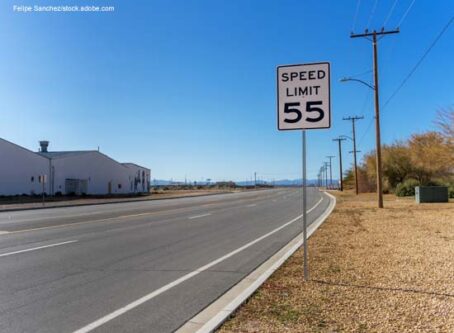Study reveals prevalence of drowsy driving among passenger vehicle drivers
With so much discussion about fatigued truckers behind the wheel, where is all the talk about passenger vehicle motorists driving while drowsy? At last, AAA’s Foundation for Traffic Safety has recently released a study that looked into drowsy-driving crashes and identified drowsiness in nearly 10 percent of examined crashes.
AAA monitored the driving of more than 3,500 people in its large-scale naturalistic study, which is when the researcher examines behavior in a natural setting while keeping interference with subjects to a minimum. Researchers measured drowsiness based on the percentage of time a subject’s eyes were closed using in-vehicle cameras. Younger and older drivers were deliberately oversampled.
Of the 701 crashes studied, approximately 31 percent were severe or moderate. Nearly 70 percent occurred during daylight hours, a quarter at night and about 4 percent in the dusk/dawn hours. More than half of the crashes involved a driver under the age of 25. This raw data did not account for drowsiness levels.
Accounting for drowsiness, the oldest drivers had the highest percentage rate of crashes, with 12.8 percent of crashes of drivers ages 65-74 rated as drowsy and 12 percent of those 75 and older. Behind older drivers were those 35-49 (11.4 percent) and 20-24 (11.3 percent). Drowsy-related crashes involving male drivers was slightly higher than females, at 9.8 percent and 9.3 percent respectively.
To no surprise, crashes involving drowsy drivers was highest at night with 19 percent of all crashes occurring in dark lighting conditions and with a drowsy driver behind the wheel. Drowsy driving crashes happened during dawn/dusk conditions in 7 percent of crashes and 6 percent during daylight hours. These percentages are consistent with the hours that people are most tired.
Across all categories, 9.5 percent of all crashes involved a drowsy driver. Among crashes severe enough to be reportable to the police, the drowsy driving rate increased to nearly 11 percent. When accounting only for drowsiness one minute before each crash, the overall rate decreased to 8.8 percent.
As noted in the study, AAA’s numbers put into question numbers compiled by the National Highway Traffic Safety Administration. According to NHTSA, only 1.4 percent of police-reported crashes involved a drowsy driver. That number increases to 2 percent for crashes resulting in injury and 2.4 percent for fatal crashes. Those numbers are consistent with fatigue-related truck crashes. According to the “Large Truck and Bus Crash Facts,” fatigue was a factor in 1.4 percent of fatal crashes involving drivers of large trucks.
It is worth noting that the nature of the study could skew real-world results – that is, monitored volunteers in a federally funded study. Furthermore, the oversampling of younger drivers, more than half, overrepresented their nationwide crash rate of 23 percent. AAA claims this overrepresentation did not significantly influence results due to lack of variance of drowsy crashes between the age groups. Also, 23 percent of crashes were excluded from the study since eye movement of the driver was not visible enough to be analyzed.









